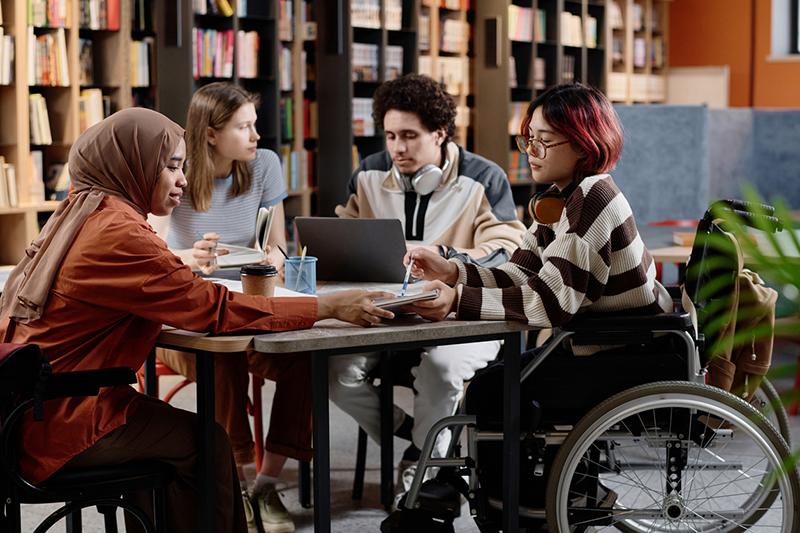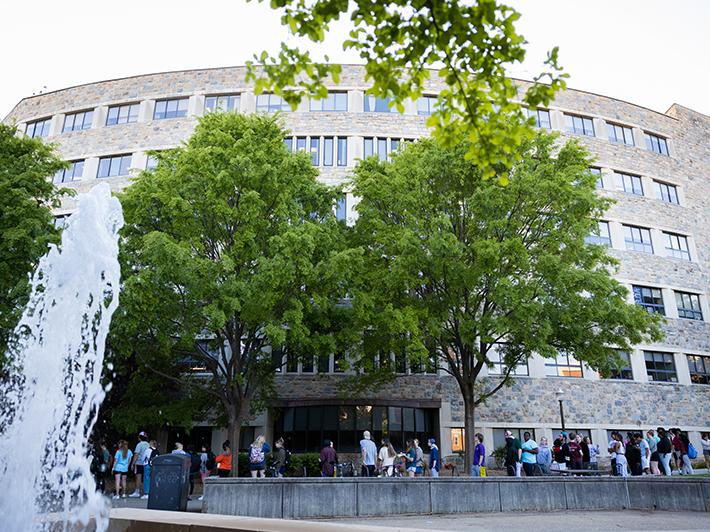Libraries hold symbolic value on campus. They embody the culture and values of a university while reaching across disciplinary boundaries and academic departments. Libraries also embody the seismic shift that digital technologies have brought to the production and dissemination of knowledge. This transformation has been as much physical as virtual, and what has emerged are spaces that are complex, dynamic and experimental in their design. Today, libraries are driven by the evolving needs of their users as much as their historical mission to preserve and provide access to information.
This is certainly true at Virginia Tech’s Newman Library. Over the past 17 years, we have transformed a quiet, book-lined library into a student-centred hub of creativity, experiential learning and community engagement.
In this article, I outline what we did to ensure that the university library is a place to not just find knowledge but to create it.
From stacks to learning environments
When I joined Virginia Tech in 2008, Newman Library was largely defined by its book collections. Five of its six floors were filled with towering stacks, and student use was limited. Digital resources were beginning to replace print materials, but students were also seeking spaces for collaboration, “analogue” creativity and deep focus.
- THE podcast: university libraries – and librarians – that are leading the change
- Spotlight guide: Redefining the university library for 2025 and beyond
- Glad you asked: how feedback turns a library into a community of scholarship
Recognising this, in 2014, we reallocated two full floors of book stacks to people rather than print. This dramatic increase in our common areas was not enough to fundamentally differentiate the library from study spaces elsewhere on campus, such as the student union or a quiet alcove outside a classroom, however. Informed by student focus groups and feedback from faculty and researchers, we set about prototyping new learning spaces.
Today, two designated “quiet” floors provide access to print collections and space for quiet study, while four “loud” floors host hubs for team collaboration and studios with access to emerging technologies and hands-on learning.
Expanding capabilities: creating an ecosystem of learning spaces
Maker spaces are increasingly common in academic libraries. Whether it’s somewhere a mechanical engineering team can refine their senior design project, a fashion student can test sustainable textile prototypes or an interdisciplinary group can work on a patentable device, such spaces allow students (and staff) to iterate and create without leaving the library. This mirrors the dynamic work environments students will encounter in their careers.
We envisaged a network of spaces, located on one floor of Newman Library, that centred learning in all its diverse forms. We wanted spaces that allowed students to explore emerging technologies, regardless of purpose (whether academic or personal) or prior experience; and spaces for collective idea generation and brainstorming.
Our Prototyping Studio, for example, is a 1,200-square-foot (111-square-metre) fabrication hub that provides access to technologies and equipment such as laser cutters, 3D printing, CNC milling, vacuum sculpting, circuitry, sewing and 3D scanning (photogrammetry) services.
What is perhaps most valuable about the studio, however, is not the equipment in it but the way in which the space has been designed to mimic the flow of the creative process, from brainstorming to iteration, refinement and exhibition of the final product. Led by a cohort of student staff, critical reflection on the nature of making and the creative process is built into the studio’s space and its service model.
The Prototyping Studio is one in an ecosystem of library spaces intended to meet the full range of student needs. The Media Studio offers recording booths, loanable media production equipment, drones, mixing stations and video recording, while our Virtual Environments Studio provides resources and expertise to design and test extended reality projects. Our Project Design Studio offers a co-working space to build collaborative and problem-solving skills. Here, student teams apply for dedicated workspace where they can carry out extracurricular long-term projects and entrepreneurial ventures.
These studios being situated in proximity to each other means students can seamlessly move from idea to realisation, turning sketches into functional prototypes, creating multimedia content to market their ideas or simply connecting with other like-minded creators.
A user-driven approach
The transformation of Newman Library has redefined what a library can be. Early on, we embraced a model of rapid brainstorming and execution when it came to developing new spaces – learning through doing and, when necessary, embracing lessons from our failures as much as our successes. By prioritising adaptability, experiential learning and student-driven innovation, we’ve created spaces that support the ways we learn and work today, effectively preparing us for the future.
Libraries must continue to evolve beyond being places where knowledge is preserved. They must become places where knowledge is shared, created and experienced together. In doing so, they will remain the proverbial heart of the university – intellectually and socially – for generations to come.
Patrick Tomlin is associate dean for academic and creative engagement for University Libraries at Virginia Tech.
If you would like advice and insight from academics and university staff delivered direct to your inbox each week, sign up for the Campus newsletter.




comment